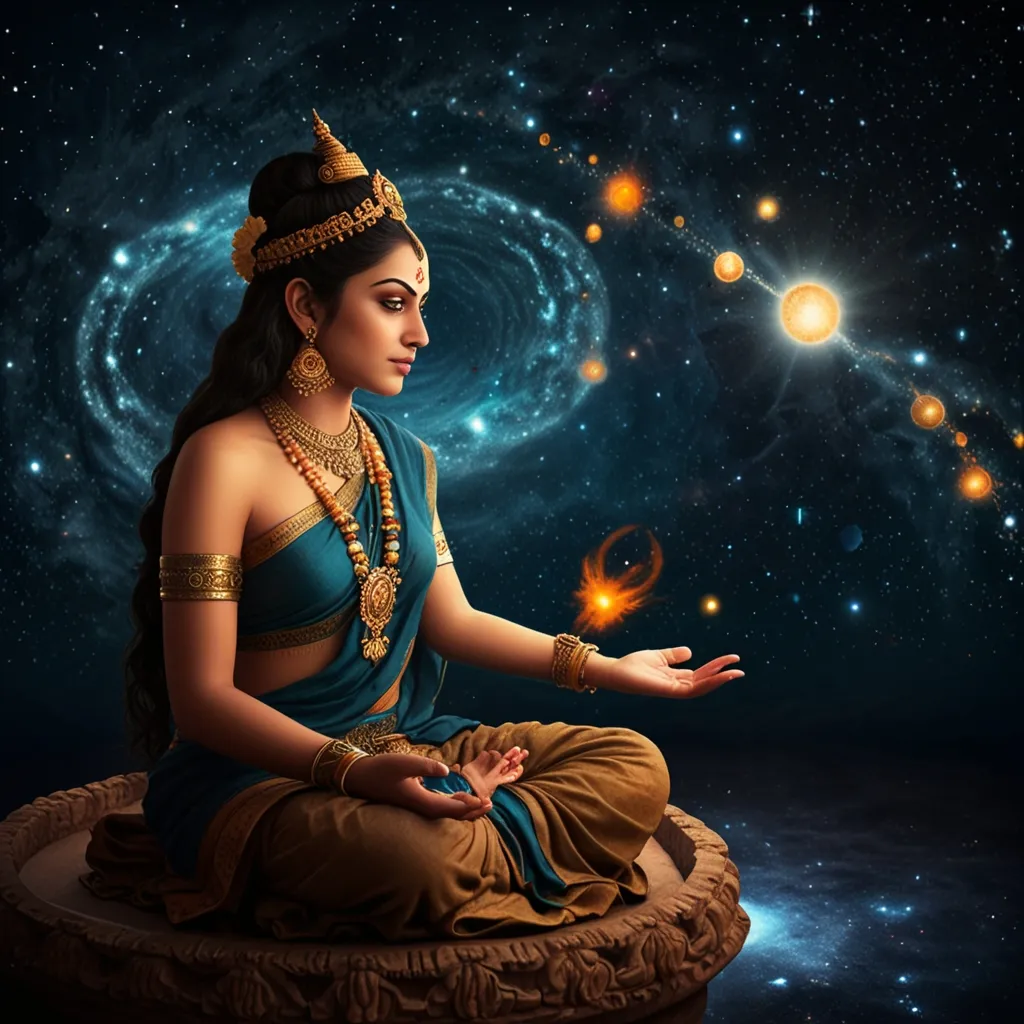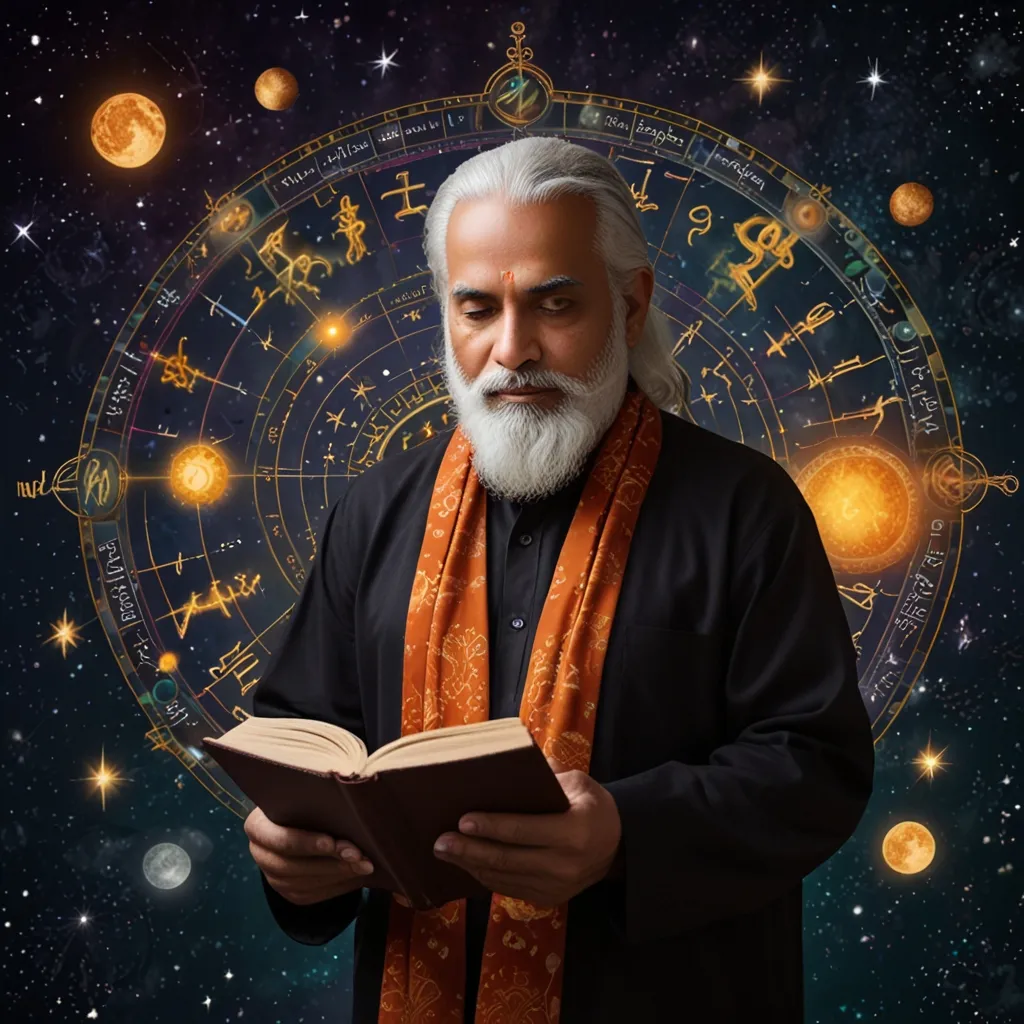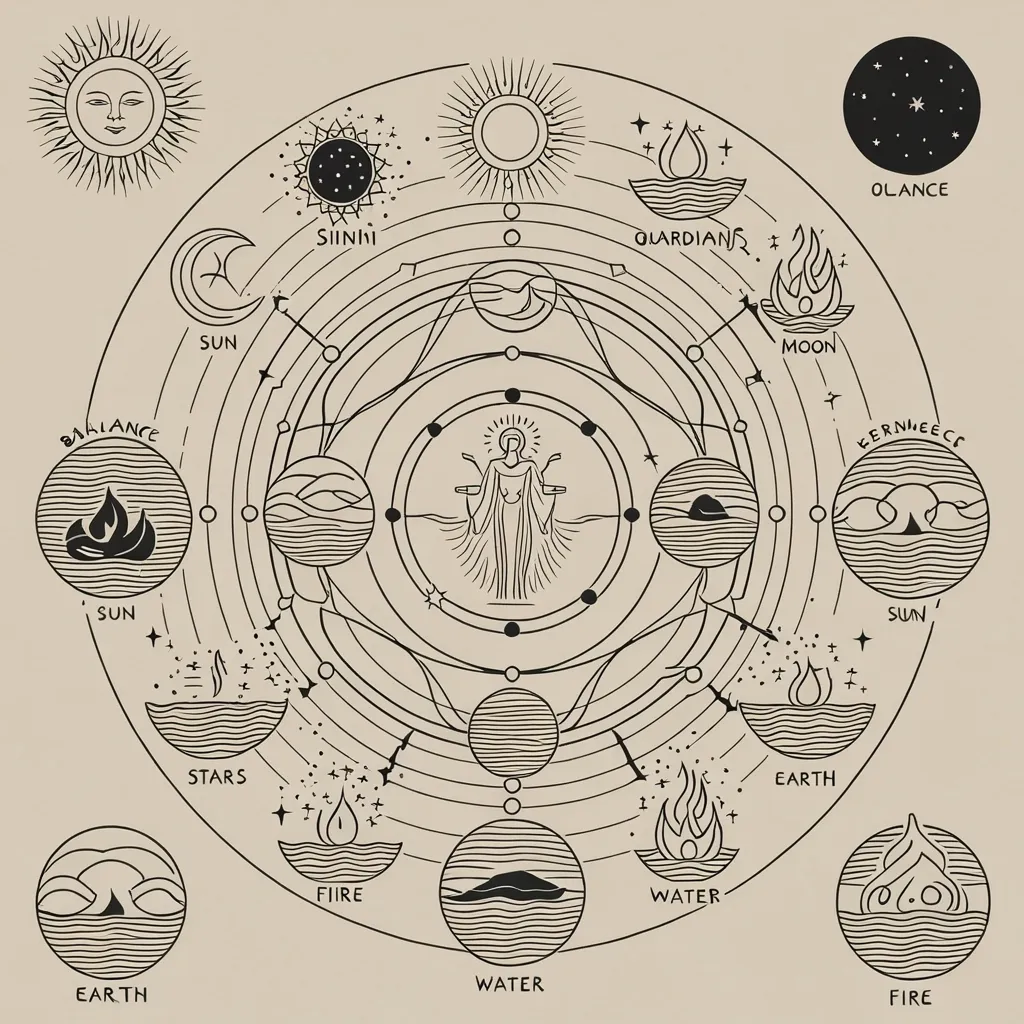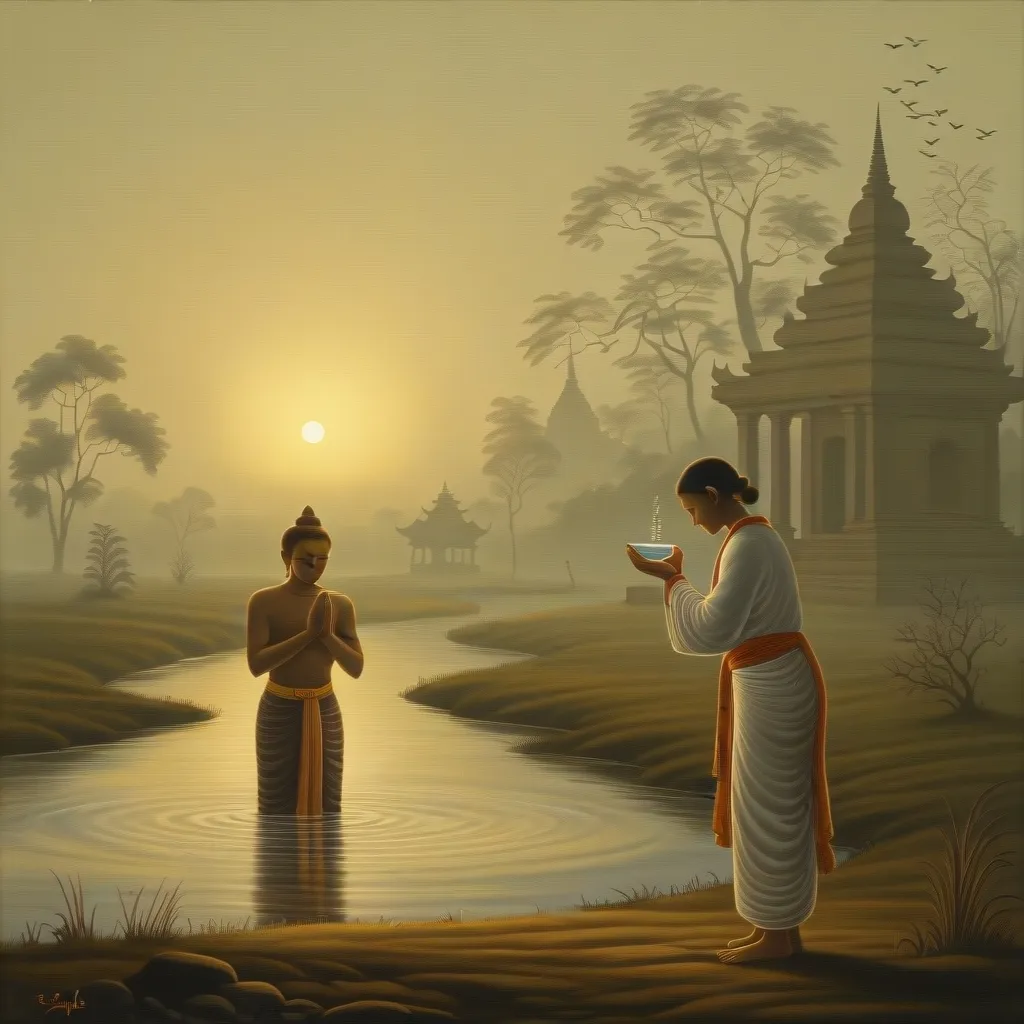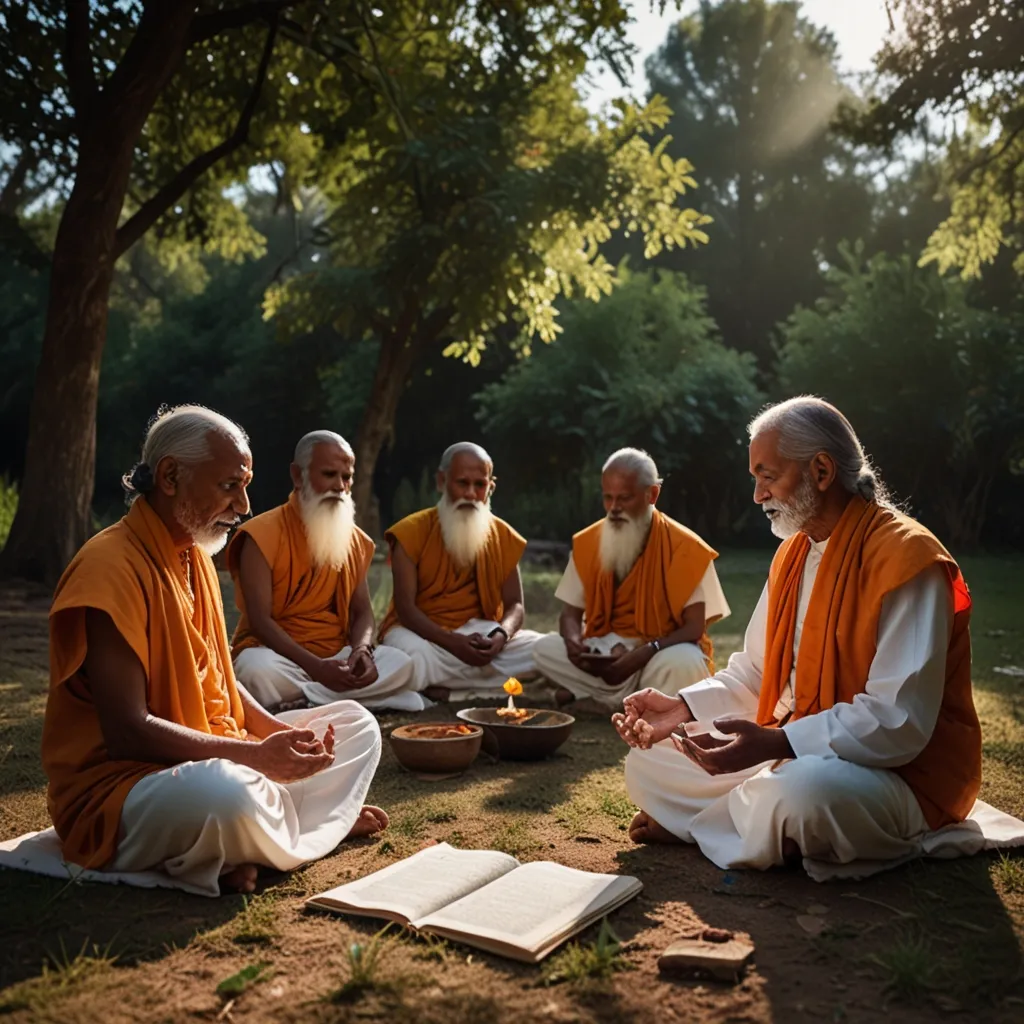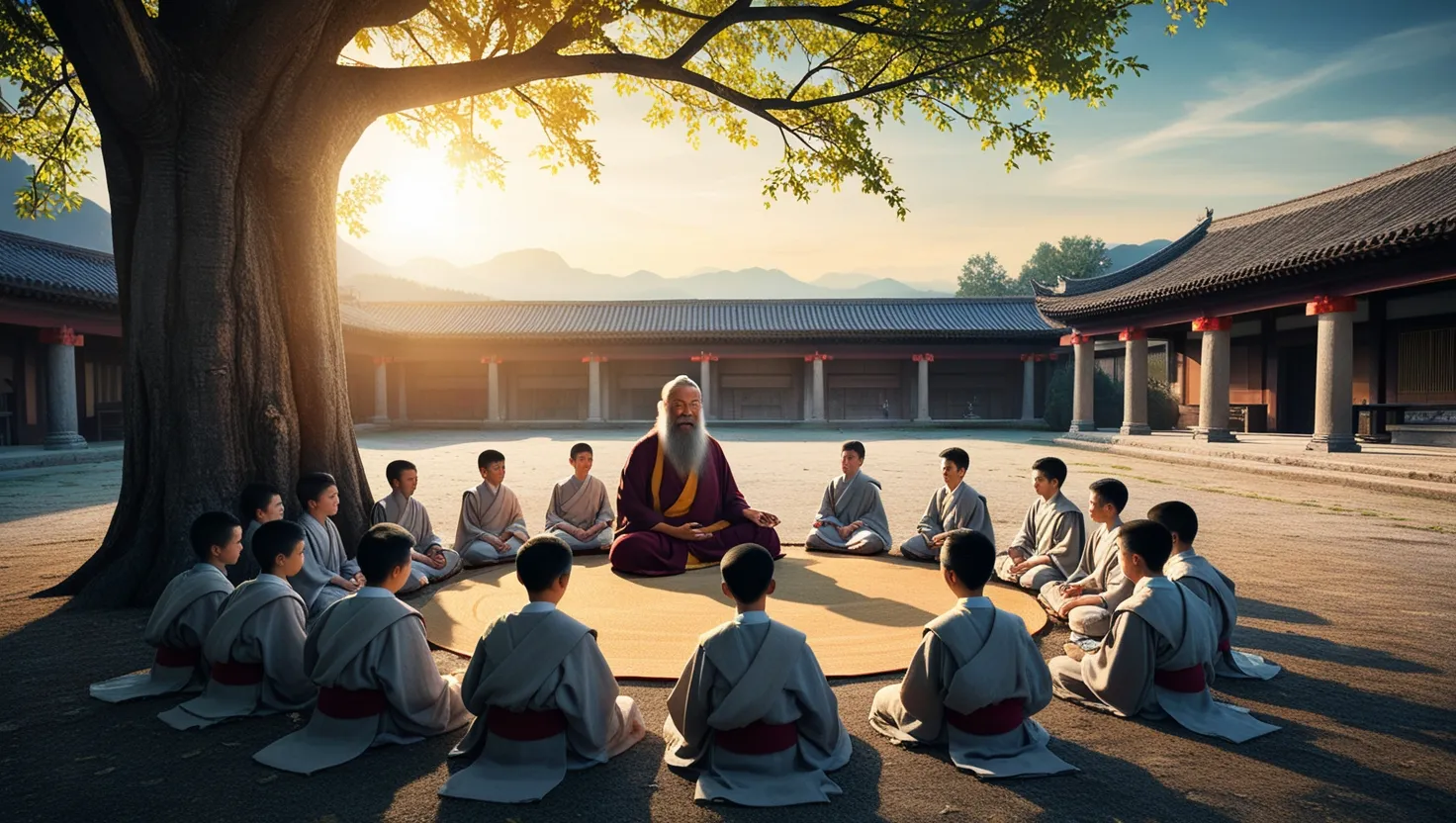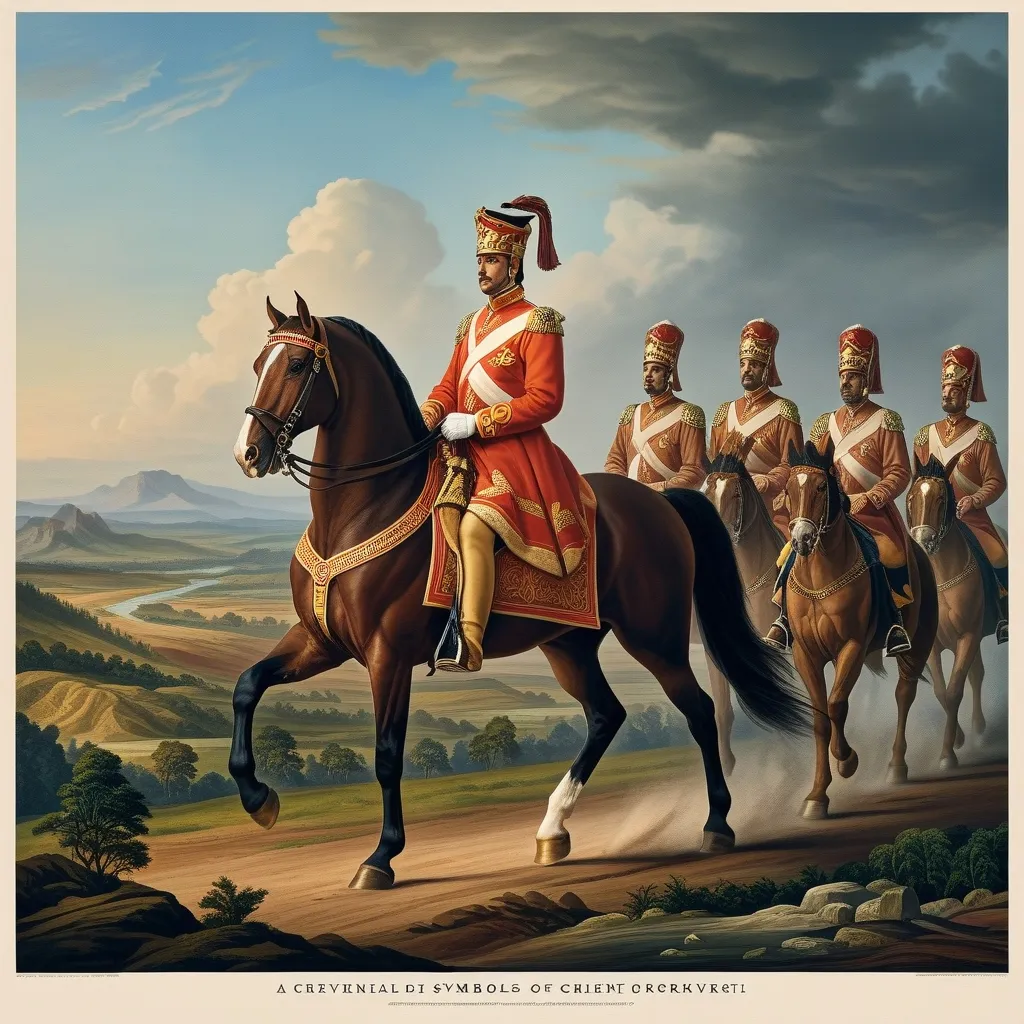Vedic cosmology is truly fascinating and packed with rich, intricate ideas about our universe. Rooted in ancient Hindu scriptures, it’s been a hot topic among scholars for ages. What’s cool is that despite being super old, it lines up with some modern scientific theories. Let’s dive into this cosmos-spanning tale.
The journey starts with the origins of the universe, as described in the Vedas and Upanishads. One standout description is in the “Nasadiya Sukta” of the Rigveda. Picture this: before everything came to be, there was nothing but darkness; no sky, no space, no existence, and no non-existence. It was an endless, formless body of water. This eerily aligns with the Big Bang theory, suggesting everything began from a single, infinitely hot, and dense point. Just imagine that vast, dark pre-creation state. It’s wild to think how ancient texts depict something so closely mirroring modern science!
Now, Vedic cosmology has a unique take on consciousness. Here, “Brahma”, the Ultimate Reality, is the cornerstone. Brahma isn’t just a creator god but represents supreme consciousness, underpinning all existence. This ties in with some contemporary theories suggesting consciousness could have a fundamental role in the universe. Seriously, how mind-boggling is it to think consciousness might be this profound, cosmic force?
Then, there’s the concept of a cyclic universe. Both Vedic and modern cosmology propose cycles of creation and destruction. Vedic texts speak of “kalpas” and “manvantaras” – cycles where the universe is born, sustains life, meets its demise, and then is reborn. This has a familiar ring to some modern cyclic universe theories, talking about expansion and contraction. It’s like the universe hitting a cosmic reset button, over and over again.
Considering cosmological structures, Vedic texts offer intriguing descriptions. The “Bhu-mandala” includes Earth and the surrounding heavens, featuring celestial chariots and cosmic bodies detailed in texts like the Bhagavata Purana. While they might sound ancient, these descriptions show a surprisingly advanced grasp of the cosmos.
Comparing Vedic cosmology with modern science opens up some cool parallels. The multiverse concept in science, where multiple universes exist in parallel dimensions, feels similar to the Vedic idea of multiple “lokas” or realms. Then there’s string theory with its tiny vibrating strings. Vedic texts talk about the universe being made up of fundamental elements or “tattvas.” The similarities are intriguing!
Vedic cosmology also dives into spacetime, a hot topic in modern physics. The Puranas describe spacetime with cycles and dimensions that are all connected. This isn’t far off from modern theories depicting spacetime as a fabric warped by gravity. Also, the concept of “aether” or a universal energy field in Vedic teachings matches up with modern ideas of a cosmic energy permeating everything.
Archeoastronomy is another exciting bridge between ancient Vedic cosmology and modern science. Ancient Indian texts talk about astronomical observatories and sacrificial arenas aligned with celestial bodies. These show that ancient Indians had a sophisticated understanding of astronomy and cosmology. It’s quite mind-blowing to think about the sharp astronomical insights they had back then.
Moreover, Vedic cosmology isn’t just about the stars and the universe; it’s deeply tied with ethics and morality. The Rigveda and Upanishads discuss how human actions have moral implications within the cosmos. This holistic view highlights the interconnectedness of everything and the importance of living harmoniously with nature. It’s a profound reminder of our bond with the universe and our responsibility within it.
Despite being ancient, Vedic cosmology is remarkably relevant today. Scholars are constantly exploring the links between Vedic ideas and modern cosmological theories. By mingling ancient wisdom with cutting-edge science, we get a richer, fuller understanding of the universe. The idea that consciousness and cyclic patterns shape the cosmos offers a unique perspective that modern science could really benefit from.
To sum it up, Vedic cosmology is like a vast, intricate tapestry woven over thousands of years. From its captivating tales of the universe’s origins to cyclic models and a deep dive into consciousness, it paints a stunning picture of the cosmos. With modern science delving into the universe’s mysteries, Vedic insights offer valuable, complementary perspectives. This ancient wisdom isn’t just a historical curiosity; it’s a living tradition, continuously inspiring and reshaping our understanding of the universe.
As we explore the cosmos, we find that ancient Vedic seers were pondering many of the same questions we do today. Their answers, though framed differently, still resonate. This merging of ancient and modern views highlights the timeless power of human curiosity and our unending quest for knowledge. It’s wild, but the ideas from thousands of years ago still help guide our cosmic explorations today. The universe remains a shared mystery, beckoning us to uncover its secrets, one incredible discovery at a time.
